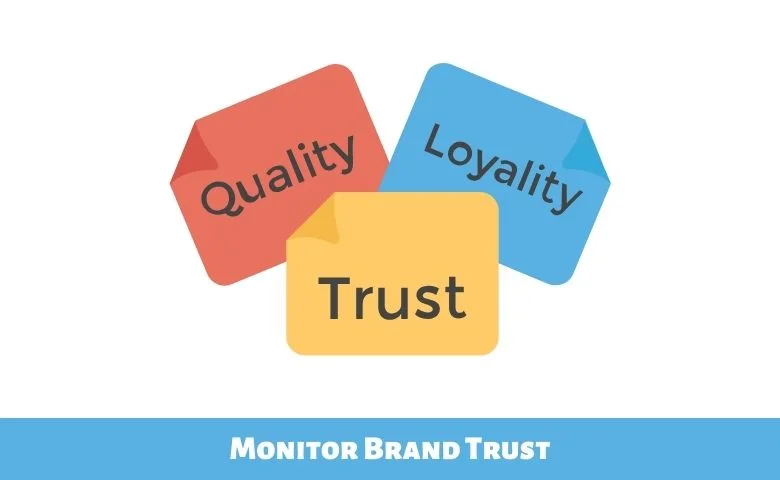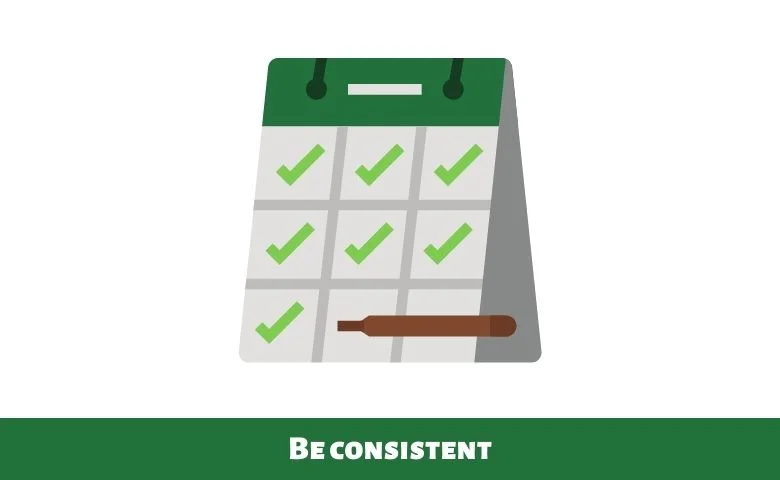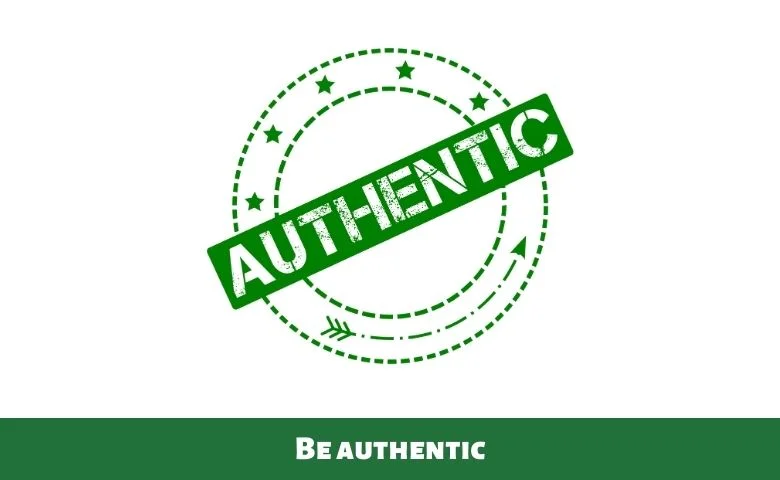Last updated on April 12th, 2024 at 11:11 am
Tips To Build Brand Trust: This week, you’ll learn seven tips on How to build trustworthy relationships with clients, so they don’t just buy from you once, but return and refer their friends.
In the whole field of branding, brand trust is probably one of the easiest concepts to comprehend, and that’s because trust is a fundamental concept. As humans, we all naturally know about it because it’s a part of our DNA and has kept us alive for thousands of years.
As people, the more we are trusted, the more likely we are to talk to others. We will spend time with them, ask for help, confide in them, and protect ourselves. Our survival depends on how much people trust us.
In the same way, the more people trust a brand, the more likely they are to return for help, offer their faith, and ultimately purchase from it.
How To Build Brand Trust?
As a brand, what can we do to build trust? In simple terms, we earn trust the same way we earn trust as people. This is by being honest, exhibiting aligned values, and following through on doing what we promise to do.
It takes years to build trust, seconds to break it, and forever to repair it. Brand strategists say brand trust does not develop overnight, but rather through well-thought-out brand plans that are followed up and executed.
Let’s bring this concept down to earth with some practical techniques.
7 Tips on How to Build Trustworthy Relationships With Clients as a Freelancer
1. Benchmark & Monitor Brand Trust

Benchmarking and monitoring brand trust is the first step in branding and marketing. Setting goals and measuring success is vital to building brand trust.
In addition to setting brand reputation targets, brand reputation management monitors online discussions to determine how the brand is doing.
To better understand the target audience and their feelings towards the brand, brand managers can perform sentiment analysis.
As part of sentiment analysis, many online sources are gathered to determine the level of trust in the market. To gather insights from respondents about future brand behavior, conduct customer surveys.
When you listen to and act upon customer recommendations, you will make them feel valued. Building brand trust begins with listening and making meaningful changes to your brand experience.
2. Be consistent

Secondly, be consistent. Consistency is key to building brand trust among your consumers, as well as maintaining a consistent brand experience across all touch points.
For example, advertisements, social posts, videos, websites, podcasts, environmental point-of-sale, packaging, vehicle wraps, direct mail, lead magnets, emails, blog posts, business cards, invoices, proposals, discoveries, consultations, onboarding documents, workshops, after-sales service, and customer support are just a few of the touch points.
In any case, consistency across all channels makes your brand identifiable. You can visit an Apple store in New York, London, Tokyo, or Sydney and expect the same furniture, customer service, logos, fonts, displays, and overall experience regardless of where you are.
Customers trust their familiar interactions with brands, but conflicts with the usual brand experience serve as harmful contradictions, and unexpected unfamiliar experiences destroy that trust.
Modern consumers are more sensitive to conflicting messages. By creating comprehensive brand guidelines, you can ensure alignment across all touchpoints so that the same brand version is presented.
Verbal elements can be determined by tone-of-voice guidelines, whereas visual elements can be determined by brand identity guidelines.
3. Be authentic

The third point is to be authentic. I know that it sounds like a no-brainer that brands should always be authentic when putting out their messages and engaging with their audience.
But that’s actually not the case. Most brands don’t appear that authentic. They put on a facade and try to hide behind it. However, the brands that take the time to put everything on the line are the ones that show up in their true selves.
People who don’t try to appear perfect but instead engage with their audience through human interactions and human interactions instead of putting on a facade. Whenever they make a mistake, they put their hands up and apologize.
If they see something wrong in the market, they’ll speak out against it. Therefore, show up authentically and make sure that this authentic self runs through every touch point, from the website copy to the customer service call.
When you take the time to make your brand authentic, it will show up in how you interact with your customers.
4. Focus On Relationships Not Revenue

Fourth, focus on relationships, not revenue. The power of shifting your mindset from revenue to relationships cannot be underestimated.
Developing and maintaining great relationships and excellent customer service should be your priority, not profits. As a result of the value loyal customers can bring to a business in the long run, successful brands understand that loyal customers are their greatest asset.
A recent study by PWC indicates that trust is the number one factor that impacts consumers’ ongoing purchasing decisions. They won’t buy from a company they don’t trust.
They believe it is the company’s responsibility to build trust. When they are faced with two competitors, they will choose the company they trust.
What does all this mean? To build trust with consumers, the primary priority should be to build relationships over sales. You should take care of the trust, and the sales will take care of themselves.
5. Be transparent

There’s no rocket science behind the fact that customers don’t like being lied to. Being transparent and honest as a brand does not just mean abstaining from lies.
It’s important to be proactive and upfront with your branding if you want to build trust based on authenticity.
To do this, you must apologize when things go wrong, be transparent about your business processes, and remove any ambiguity or gray areas that might mislead you.
They share information on salaries, business goals, source code, business metrics, and other things that are usually kept private on their dedicated website. Companies like Buffer, which manages social media, make transparency a core value.
As a result of their transparency, consumers are more likely to trust brands that apologize for mistakes and reveal business practices. As well as helping consumers relate to the company, attaching a face to the brand also helps consumers relate to it.
As the face of the company, you should use a personal brand alongside the corporate brand. Transparency is really about being open about business practices, not sugarcoating what’s behind the veil of the business.
While authenticity and transparency seem similar, the actual meaning of transparency is being transparent about your business practices.
6. Creating Valuable Content

The sixth tip is to create valuable content for your customers. A robust content marketing strategy is essential for modern brands to establish themselves as industry leaders or authorities.
Modern brands must frame themselves as solution providers. Customers have pain points that need to be solved. Your products and services can assist them solve their problems, but you should also offer helpful content to help them overcome their problems.
Creating webinars, video tutorials, blogs, ebooks, whatever works in the context of your brand in a format that suits your audience is an excellent way to help them with a variety of challenges.
Now look at your brand’s reputation as an authoritative source that consumers trust if it offers helpful and authoritative content.
The process of becoming that go-to source for content help takes time and effort, and it also requires a comprehensive content marketing strategy that addresses your audience’s issues.
You can do this by coming up with 100 challenges or 100 questions that your audience has and crafting content around them all.
7. Build Social Proof

The seventh is to build social proof. Both trust and distrust are contagious. I have already mentioned that social proof is crucial to building trust. Consumers pay attention to what others think about your products, services, and the whole brand experience.
A PWC study also found that consumers trust other people’s opinions more than brand efforts. This means positive reviews are a gold mine you can exploit for your business.
Those brands succeed because they collect positive social proof and make it more visible to others. They also share testimonials on their website and user-generated content on social media to amplify that visibility.
When your customers enjoy your product or service, or your brand experience, or ultimately have a positive outcome, nothing quite sells your brand. This is why gathering and sharing social proof is an effective strategy.
A positive reinforcement loop results in more trust as evidence of trust breeds more trust, so maintaining trust is a never-ending process. Branding should never stray from reliability, consistency, transparency, and authenticity.
Hard work can be undone quickly in your audience’s minds, and your brand reputation can be irrevocably damaged. However, online brand experiences pay off in building a trusted brand.
Those who trust a brand become loyal, choose your brand over your competitors, advocate for your brand, and engage with your brand’s communications.
If it were easy, every brand would do it. It is challenging, it requires hard work, and it requires dedication. But the best rewards are there for those who succeed.

1 thought on “7 Tips To Build Brand Trust, Loyalty, And Advocacy With Clients as A Freelancer”